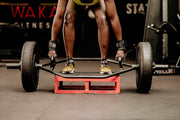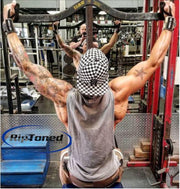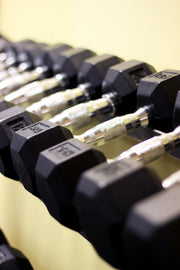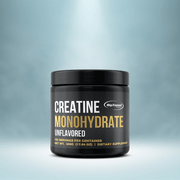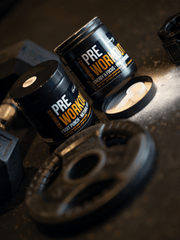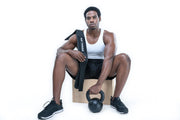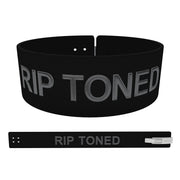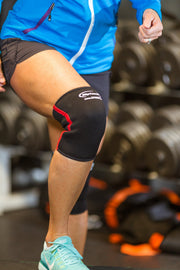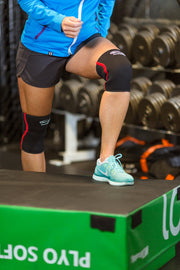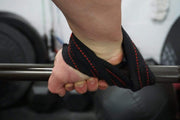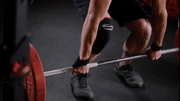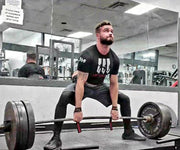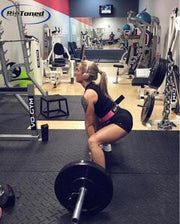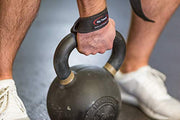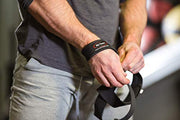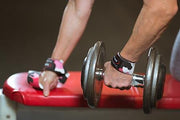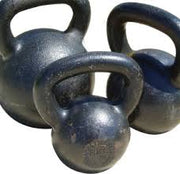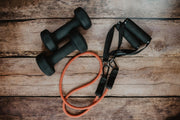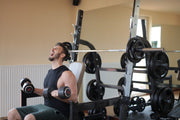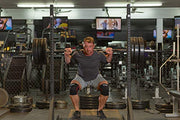Frustrated with your weightlifting progress in the gym?
Do you have what you feel are realistic weightlifting goals, but even after busting your butt-pounding weights and working your weightlifting routines tirelessly, you just aren’t attaining the levels you are hoping for?
Maybe you have tried some of the latest and greatest fitness routines, gone with higher reps and lower weight, or are mixing and matching various exercises.
But nothing seems to be working and getting you closer to your weightlifting goals...
Well, then you need to check out this article I found for you.
“Top 5 Reasons You’re Not Seeing Result In Gym
After over 20 years in the personal training business, I’ve come to realize that many people still have problems achieving their personal fitness goals. While this is good for my business, the vast majority of people will be training on their own without a trainer. So it’s with these folks in mind that I’m writing this.
Regardless of the goal (fat loss, muscle gain, or performance), I believe there are a few commonalities to the lack of results the average trainee experiences.
Here are my top 5:
1. Trying to create the perfect workout
While knowledge is a great thing, many trainees experience “analysis paralysis.” The Internet age has made this a bigger problem than ever before.
Simply put, there is too much information available. We are constantly bombarded by the latest tips, tricks, and secrets to getting six-pack abs or buns of steel. And it all sounds good.
The result of this information overload is generally an overly complicated, convoluted, and impossible-to-maintain program.
By the time you’ve sprinkled in a little of program A with a dash of program B to an already too-long program C, the resulting workout is a Frankenstein-like behemoth that takes too long to get through.
You’re going to lose your mind for sure!
Do yourself a favor: "Pick one program that fits your goals and sensibilities and doesn’t add anything to it.”
To get you on the right track, here is a great video showing you one of the best muscle-building weightlifting exercises you can use as a foundation for almost any weightlifting routine.
2. Not enough intensity in workouts
Resistance training is a fantastic way to build strength, endurance, and muscle mass; however, if done improperly, it can cause more harm than good. When I'm training my clients in the gym, I always start by making sure we focus on finding the right intensity for their workout. Intensity refers to the amount of weight relative to your maximum lift capacity, or 1RM in fitness speak, and this metric has a direct impact on how far you can push your body. For muscle growth, I usually suggest clients train with moderate to high intensity (60–85% of 1RM) because that triggers greater muscle damage and metabolic stress, which leads to increased gains over time. However, it's important to be careful not to overdo it; too much intensity can lead to injury, so it's essential we progress gradually over time.
Tips for increasing workout intensity
With a few simple hacks, you can take your workouts to the next level!
- Start with a warm-up to get your body ready for exercise and help avoid injury.
- Gradually increase the weights you lift as well as the number of reps you do with each exercise.
- Increase intensity by adding additional sets to your workout or increasing the amount of time spent on each exercise.
- Incorporate power exercises such as plyometric drills, sprints, and high-intensity interval training (HIIT) into your routine to push your body even further.
Don't forget that when you increase the intensity of your workout, you should do it slowly and step by step.
By increasing intensity slowly and incrementally, you are giving your muscles an opportunity to adjust and adapt to new demands so that you don't run the risk of injuring yourself or straining yourself suddenly.
It's always important to challenge yourself and push yourself further, but do it in a way that is safe and healthy!
3. Lack of proper form
Lifting weights with the right form is an important part of any fitness plan for many reasons.
First of all, using the right form makes it less likely that you'll get hurt because the weight is spread out evenly and the joints and muscles don't have to work as hard.
Second, if you use the right form, you can target specific muscle groups more effectively and get the most out of your workout.
Additionally, it allows you to lift heavier weights with greater control and efficiency, improving your performance overall. Using the wrong form all the time can also lead to muscle imbalances, which can cause big problems in the long run. And lastly, the proper form helps reduce the risk of burnout or injury, so that you can continue training consistently and see progress over time.
Putting in some extra time to perfect your form can save you a lot of trouble in the long run!
Tips for improving form and avoiding common mistakes
- Take your time and focus on each movement and position of the exercise.
- Use a full range of motion while keeping core muscles engaged throughout the entire movement.
- Stop the lift immediately if feeling any pain or discomfort during an exercise.
- Practice with lighter weights first to nail down the technique before increasing intensity.
I always tell my trainees that proper form is key to achieving the best results when weightlifting.
It not only improves performance by making sure the muscle groups you're working with get the most work possible, but it also helps make sure your body moves in a safe, injury-free way.
Maintaining proper form also eliminates muscle imbalances between opposite sides of the body, reducing fatigue and burnout and allowing you to work out for longer periods of time with better results! That's why it's essential to focus as much on proper form as weightlifting—ultimately, you'll be thankful for it in the long run!
4. Not enough rest and recovery
If you want to maximize your muscle growth, rest and recovery are key! After challenging your body with a hard workout, make sure to take some time off to focus on recovery. This will help keep inflammation and soreness down while also allowing your muscles to repair themselves and grow stronger.
Taking time off in between training sessions can help reduce muscle soreness, so you'll be able to work out more efficiently.
Also, giving your body enough time to rest and recover helps keep your hormones in balance, which boosts your performance during each workout and leads to bigger muscle gains in the long run.
So next time you hit the gym, make sure to include plenty of restful days into your weekly routine! If you want to maximize your muscle growth, rest and recovery are key! After challenging your body with a hard workout, make sure to take some time off to focus on recovery.
This will help keep inflammation and soreness down while also allowing your muscles to repair themselves and grow stronger. Taking time off in between training sessions can help reduce muscle soreness, so you'll be able to work out more efficiently.
Additionally, providing your body with adequate rest and recovery helps create a balanced hormonal environment that supports increased performance during each subsequent workout, resulting in greater muscle gains in the end.
So next time you hit the gym, make sure to include plenty of restful days into your weekly routine!
Tips for optimizing rest and recovery
To maximize your performance, it is essential to practice proper recovery protocols. This means getting enough good sleep, staying hydrated, and paying attention to the kinds of food you eat.
Stretching and foam rolling are great ways to achieve self-myofascial release and keep your muscles loose. Regular massages can improve circulation and reduce tension.
Taking rest days is also vital; everyone needs time to recover! Heat and ice therapy are also great ways to deal with swelling or tightness, so use them wisely.
Lastly, don't train too much. Listen to your body and change your routine as needed so you don't hurt yourself or slow down your recovery.
5. Not enough consistency
If you want to reach your fitness goals, you need to be consistent with your weightlifting plan.
A regular and consistent routine of weightlifting sets up a positive cycle that leads to progress and motivation. It also gives you a chance to improve your technique and lower your risk of getting hurt.
Progressive overload is an important weightlifting principle. To get stronger, you need to keep increasing the resistance, which can only be done by being consistent.
Furthermore, consistent workouts help promote muscle stimulation and recovery, allowing for continuous improvement.
Finally, it encourages adherence—in other words, sticking with your routine! This makes people more likely to keep going and less likely to quit or lose interest along the way.
If you're looking to solidify your weightlifting regimen, focus on developing consistency; it'll make goal-setting easier too!
Tips for staying motivated and consistent
Achieving your weightlifting goals doesn't have to be a struggle. With the right tools and plan in place, success can be yours! Start by setting clear and realistic goals that you know you can achieve, then create a workout routine; this will give you focus and motivation. Track your progress to remember how far you've come, and consider finding an exercise partner or group of like-minded lifters for some friendly competition. Change up your workout routine by trying new exercises or fitness classes. Find out what your gym has to offer so you can stay motivated and challenged. Reward yourself when milestones are reached, stay positive no matter the outcome, get enough sleep so that you can stay consistent with hitting the gym, and finally, find inspiration both inside and outside of the gym.
Conclusion
Improper form, insufficient intensity, an inconsistent workout routine, poor nutrition, and overtraining are all common mistakes that weightlifters make, which can hinder their progress. Weightlifters are more likely to reach their goals if they don't do these things and instead focus on progressive overload, consistency, proper nutrition, and recovery. Are you making any of these common mistakes?
Weight Lifters Ask
People often have a lot of questions about weightlifting and how to achieve their goals.
It can be hard to know where to start or what mistakes to avoid when starting a weightlifting program.
In this section, I will answer some of the most common questions I have been asked by my trainees about reaching weightlifting goals, achieving weightlifting goals, and common weightlifting mistakes.
Is deadlift 1.5 bodyweight good?
Deadlifting 1.5 times your body weight is a great fitness accomplishment, and it’s something you should be proud of! But if you’re just getting started with deadlifts or want to increase your current weight, there are some important tips to keep in mind.
First and foremost, form is essential for a safe and effective lift. Always maintain a flat back, and make sure you don’t round your shoulders when lifting the bar off the floor. Start by setting your feet shoulder-width apart with toes pointed slightly outward. Keeping good posture will help ensure that muscle groups like glutes, hamstrings, lats, traps, and abs get engaged properly during the lift while reducing the risk of injury.
The second tip would be to focus on technique instead of ego-lifting: concentrate more on proper form rather than trying to lift as much as possible right away without proper form or warm-up sets first—this greatly increases the risk of injury!
Also, remember that any kind of resistance training requires progression over time—don't go from zero work capacity/fitness level straight into heavy lifts! Start light, then progressively add more weight over time—find what distance works best for your comfortability and continuously challenge yourself so you can reach new heights in terms of strength gains (while keeping form tight).
And lastly, make sure to always warm up before each session. A few reps with lighter weights (50–70% max load) for 5 sets or so helps wake up all muscle groups involved in the deadlifting motion plus gets the blood flowing, which equals better performance and reduced risk for injuries due to increased range of motion, which dictates power output capability associated with larger loads at lower intensities (i.e., heavier weights). This also aids in mental and physical preparation, with mental visualization playing an important role in completing a task such as deadlift reps at a specific weight!
In conclusion, being able to deadlift 1.5 times your body weight is a great achievement, but be sure to take safety precautions like keeping your form tight during each rep and not going straight for the heaviest plate without warming up first.
If your progress is being hindered by your grip strength try a pair of lifting straps to keep your progress steadily moving forward.
Also, pay attention to the progression itself rather than jumping straight into higher intensity ranges right away prior to any base-building exercise routines because this could quickly lead towards burnout/injury scenarios down the line if not done correctly from the get-go.
Good luck out there gym rats!
How many months of lifting does it take to see results?
Generally, it takes between two to three months of consistent weightlifting to start seeing noticeable results. However, the timeline for visible changes can be quite variable depending on several factors, such as your current fitness level and diet, the type of exercises you are performing, and even genetics. To maximize your progress in a short period of time, focus on performing compound exercises that target multiple muscle groups, like squat puts, deadlifts, bench press, and overhead press.
In addition to an effective exercise program technique is also important - strive for perfect form with each rep rather than sacrificing quality for quantity. Compound movements should be done with heavy weights at low reps (4-6) while isolation exercises should be done with lighter weights at higher reps (8-12). Rest between sets should generally range from 30 seconds to two minutes – longer if using heavier weights. Aim to increase weight or sets as you become stronger – this will ensure that you continue making progress in building strength and muscle mass over time.
Having a well-balanced diet is another essential component when attempting to achieve long-lasting results from lifting weights; without adequate nutrition, your body won't have enough energy or raw materials needed for physical growth which can significantly slow down development timeframe. Keeping track of macros (macronutrients) may seem daunting but setting yourself up with meal plans that provide the required amount of proteins carbohydrates fats calories etc will make it easier to focus on fitness instead of planning meals every day.
Finally, although results may vary based upon individual goals progression can often occur quite fast especially during beginner stages since there tends not more room available for improvement compared to later stages where gains are harder to come by due to slower plateaus over time Therefore if sticking to dedicated-fitness routine complete sufficient rest periods amongst proper eating habits then could expect to see some changes after couple months
What are the two common mistakes in lifting?
The two most common mistakes I see people make when lifting weights are improper form and tempo, as well as inadequate rest between sets.
Improper form and tempo refer to the way in which you perform your exercises.
When lifting, proper form is essential; if performed incorrectly, it increases the risk of injury while also reducing the effectiveness of each rep. It's important to keep good posture throughout each exercise, ensure that all joints (elbows, knees, etc.) stay slightly bent throughout a movement, and control the speed at which you perform an exercise—not going too quickly nor too slowly—maintaining even tempos that avoid jerky movements or extremes of range for safety reasons.
Inadequate rest between sets occurs when individuals fail to allow sufficient recovery time for their muscles before continuing on to their next set or workout routine.
Rest is important for getting the most out of your workouts because it lets your muscles recover from fatigue or strain caused by previous weightlifting efforts.
If a person does not provide enough rest for his or her body, this will lead to greater fatigue and diminishing results over time due to decreased intensity levels caused by exhaustion occurring more quickly than before.
Generally speaking, 4-5 minutes should be taken between strength training exercises, with 10-15 seconds taken within any given set interval, respectively, so as not to gather unnecessary lactic acid build-up within muscle tissues, resulting in post-lift soreness later on down the line.
For those new to weightlifting, the best advice would be that "perfect practice makes perfect," so take your time learning correctly how it should be done rather than rushing into trying heavier loads until you have mastered proper technique first—then focus on increasing loads gradually but surely instead!
What are the 6 basic lifts?
There are six basic lifts that are essential to any good fitness program. They’re the core movements for strength and power training, so mastering them is key if you want to get results. The six basic lifts include:
1) Squats: Working your way up to doing a full range of motion squat with weights will build lower body strength and help you gain muscular endurance in your legs, buttocks, and hips.
2) Deadlifts: A foundation lift for developing strength through your entire body as well as improving posture. It also helps with grip and coordination!
3) Overhead presses: This lift works on developing shoulder mobility while also strengthening the arms, chest, and upper back muscles.
4) Chin-Ups: An important upper-body exercise for developing a strong scapular retract (pulling shoulders back). It's an excellent part of any pull-up workout routine!
5) Bent-over rows: This exercise targets both large muscle groups in the upper back, such as the lats and rhomboids, as well as targeted bicep work!
6) Bench press: One of the most iconic movements when it comes to lifting weights, often called "the king" of exercises, this one develops power in the chest region along with many other muscle groups like the triceps, which helps promote overall stability.
If you’re going heavy and are concerned about a wrist injury try out a pair of wrist wraps to enhance your performance and protect your wrists from injury.
Doing these lifts correctly is important for two reasons. First, it keeps you safe. Second, it makes sure you get the most out of each exercise so that your body stays balanced as you work toward specific goals like competition, bulking up, etc. in the future. Knowing how hard or easy each move is should give us more control over how our bodies move. This gives us a much higher level of fitness than we would have if we didn't know how to do each move correctly or get help from a trainer.
What is the most important part of weightlifting?
The most important part of weightlifting is proper form. Oftentimes, people get so focused on lifting heavy weights that they forget to improve their technique. This can lead to an increased risk of injury and poor results from your workout. Good form will make your lifts more effective, make sure you're using the right muscles, and help keep you from getting hurt.
A good lift starts with where your feet are placed. For safety and efficiency, you must make sure you have a stable base before you start lifting. Other than this, make sure you’re not arching or rounding your lower back during exercises such as deadlifts or squats; keep it neutral throughout the movement. Additionally, always brace your core during lifts to protect yourself; this should be done by tightening or squeezing your stomach area at the beginning of each set and maintaining this tension throughout each rep until all reps are completed in the set.
Finally, focus on the full range of motion – completing movements through all ranges means taking advantage of not just muscle growth but also joint stability and flexibility improvements. Make sure you move slowly with control when lowering weights into place, which helps groove good muscle memory for consistent form plus leads to stronger muscular contractions in order to finish 3–4 seconds per rep smoothly yet powerfully when lifting. Stretching after every workout has many other benefits, like improving blood flow, reducing inflammation, and making muscles less sore after hard workouts.
The most important thing to take away from this is to pay attention to your form and not put too much weight on any one exercise. Go slow and controlled, and put extra effort into squeezing everything tight during every repetition. Small gains now, big ones later!
What are good goals for weight lifting?
If you're looking to get the most out of your weight lifting, setting goals is key. Goals help you stay motivated and focused on what you need to do in order to reach your desired results. Here are some great weight lifting goals for all levels of exercisers:
For Beginners: If you're just starting out with weight lifting, your focus should be on learning proper form for different exercises and building a strong foundation for future progress. Your goal can be as simple as mastering basic moves like the squat and deadlift before moving on to more difficult lifts like power cleans or snatches.
Intermediate Lifters: At this level, your body has likely developed enough muscular strength and coordination that it's time to focus more on heavier weights at lower reps (in the 1–5 range). You should also incorporate accessory movements into your workouts, like pull up, push-ups, core exercises, etc., which will help develop muscular balance and improve overall performance in other lifts.
Advanced Lifters: Once you've been consistently strength training for a few months or years, it's time to start peaking toward a specific goal, like increasing your max lift numbers or making your body look better by making your muscles bigger (hypertrophy).
At this level, it's important not to overdo it by working out too many muscles in one session. Instead, look into periodization programs that break up muscle groups into separate days so that each can get full attention and have enough time to rest between sessions so that you can keep getting stronger.
No matter where you are in terms of fitness, setting specific goals that are both realistic and challenging will help you reach your weightlifting goals both mentally and physically.
How do I bench press correctly?
Bench pressing is one of the most popular exercises in weightlifting and an effective way to build strength, size, and power. It can also be dangerous if done incorrectly. Here are some guidelines to get the most out of your bench press while staying safe:
- Set up correctly: Start by getting into a comfortable position on a flat bench with your feet planted firmly on the floor or platform for stability. Your shoulder blades should be slightly tucked together but not touching as you lower or raise the barbell towards or away from you. This helps protect your shoulders from injury when pushing heavier weights off your chest during the lockout (the top point in a rep). Grip the bar evenly and make sure to have full control over it before attempting each rep; do not jerk or bounce it off your chest as this will increase the risk of injury even further!
- Perform each rep with proper form: lower the bar to mid-sternum level while keeping it centered over your eyes, then push straight back up until your elbows are fully extended (lockout point). Don't arch your back too much at any point in these movement phases. Keep your posture correct by using your core muscles so that only your torso moves during execution.
Lastly, remember never to lock out joints past their natural range; eccentric motion should always start below parallel and end around 90 degrees back up again instead of going all the way down or up, respectively, since this could cause joint damage quickly with the heavy loads being used here.
- Control tempo and progression: A slow, controlled repetition cadence is key for increasing resistance levels without risking harm; try slowing reps down even more when using heavier loads (>90% 1RM) so that pressure stays consistent across the entire ROM (range of motion). If you want to progress beyond plateau points after spending more time training on benches, do hypertrophy sets (8–12 repetitions) first until muscle memory builds enough strength to handle higher pounds comfortably without fail due to the risk factor associated with max attempts, which is always present here!
By following these tips, you'll be able to safely work out the pectoralis major and anterior deltoid, which are the main muscles used in bench presses. You'll also avoid making common mistakes when pressing weights up toward the ceiling.
My Final thoughts and advice for achieving weightlifting goals
One rep at a time is how you will reach your weightlifting goals. With every push-up, chin-up, or step lower in the push-up position, you are one step closer to reaching your goal. If it's building muscle mass and strength that you are striving for, focus on upper chest and back work so that you can lift heavier weights with the correct form. Make sure to stay disciplined about how much weight you lift for each exercise and increase the weight gradually when possible. As long as you stay consistent and motivated throughout the process, you will be able to reach your weightlifting goals in no time!
Share your thoughts and experiences in the comments below.


